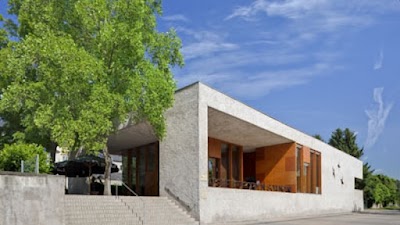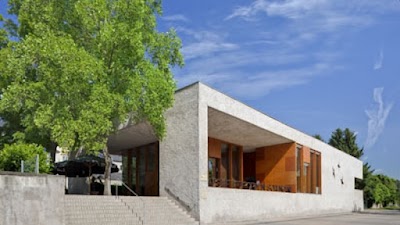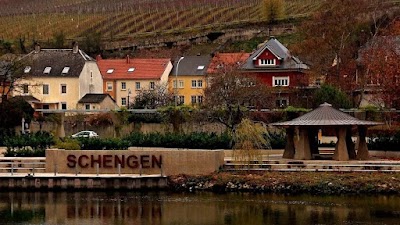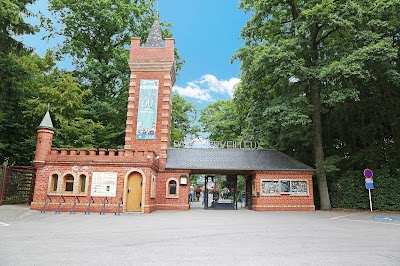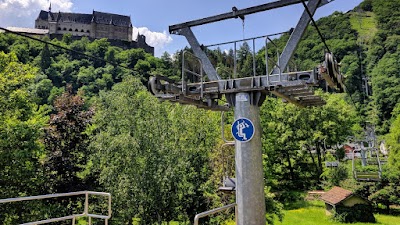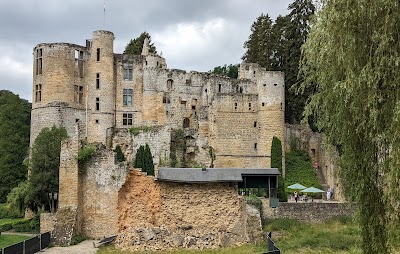Schengen Museum (Musée Schengen)
Overview
The Schengen Museum, nestled in the charming village of Schengen in the Canton of Grevenmacher, Luxembourg, invites visitors to delve into the origins of the Schengen Agreement. Located at the tripoint where the borders of Luxembourg, Germany, and France meet, this museum is a must-visit for anyone interested in European history and the evolution toward a borderless Europe.
The museum's history is deeply intertwined with the signing of the Schengen Agreement on June 14, 1985, aboard the ship Princesse Marie-Astrid on the Moselle River. This landmark treaty initiated the process of eliminating border checks among participating countries, fostering greater freedom of movement for Europeans. Inaugurated in 2010, the museum commemorates this pivotal event, offering visitors insightful perspectives on the agreement's origins and its lasting influence on modern Europe.
Upon entering, guests are welcomed with an engaging multimedia experience that traces the historical context leading up to the agreement. The exhibition unfolds chronologically, beginning with the geopolitical landscape of post-World War II Europe, which set the foundation for unity among nations. The museum employs interactive displays, historical documents, photographs, and personal testimonies to create an immersive educational environment.
One of the museum's standout features is the display of the original Schengen Agreement documents, meticulously preserved and showcased. These artifacts, along with the pens used during the signing, provide a tangible link to this significant moment in history. Visitors can also view archival footage of the signing ceremony, offering a vivid insight into the event that redefined Europe.
In addition to historical artifacts, the museum examines the broader implications of the Schengen Agreement. It highlights the socio-economic advantages for member states, including enhanced trade, tourism, and cultural exchange, all made possible by the removal of border controls. The exhibition also addresses the challenges and criticisms faced by the Schengen Zone, such as security concerns, immigration issues, and responses to crises like the COVID-19 pandemic.
An intriguing aspect of the museum is its focus on the personal stories behind the Schengen Agreement. Narratives from individuals who experienced the division and eventual reunification of Europe add a human touch to the political discourse. These stories, shared through videos, sound bites, and personal artifacts, make the historical content more relatable and impactful.
The museum does not shy away from contemporary issues, presenting a balanced view of ongoing debates surrounding the Schengen Zone. It features discussions on current challenges, such as the refugee crisis and the delicate balance between open borders and national security. This forward-looking approach transforms the museum into a space for ongoing dialogue about the future of European integration.
Set in a picturesque location, the Schengen Village enhances the museum's allure. Visitors can enjoy scenic strolls along the Moselle River and stand at the tripoint marker where Luxembourg, Germany, and France converge. This unique geographical feature encapsulates the spirit of the Schengen Agreement, making a visit to the museum a well-rounded experience that blends education with natural beauty.
Additionally, the Schengen Museum frequently hosts temporary exhibitions and events, making it a vibrant destination for visitors of all ages. Workshops, lectures, and cultural events are regularly organized to engage the public and schools, promoting a deeper understanding of European integration.
For international tourists, the museum offers multilingual support, with exhibits and information available in various languages to ensure accessibility for a diverse audience. The friendly and knowledgeable museum staff are eager to assist with any inquiries and provide additional insights.
In summary, the Schengen Museum in the Canton of Grevenmacher, Luxembourg, is not just a museum; it is a journey through the historical and cultural developments that have shaped modern Europe. With its comprehensive exhibits, personal narratives, and stunning location, it is a must-visit for anyone interested in the history of European integration and the principles of openness and cooperation that continue to define the continent today. Whether you are a history enthusiast, a student, or a curious traveler, the Schengen Museum promises an enriching and enlightening experience that resonates with the spirit of a united Europe.


